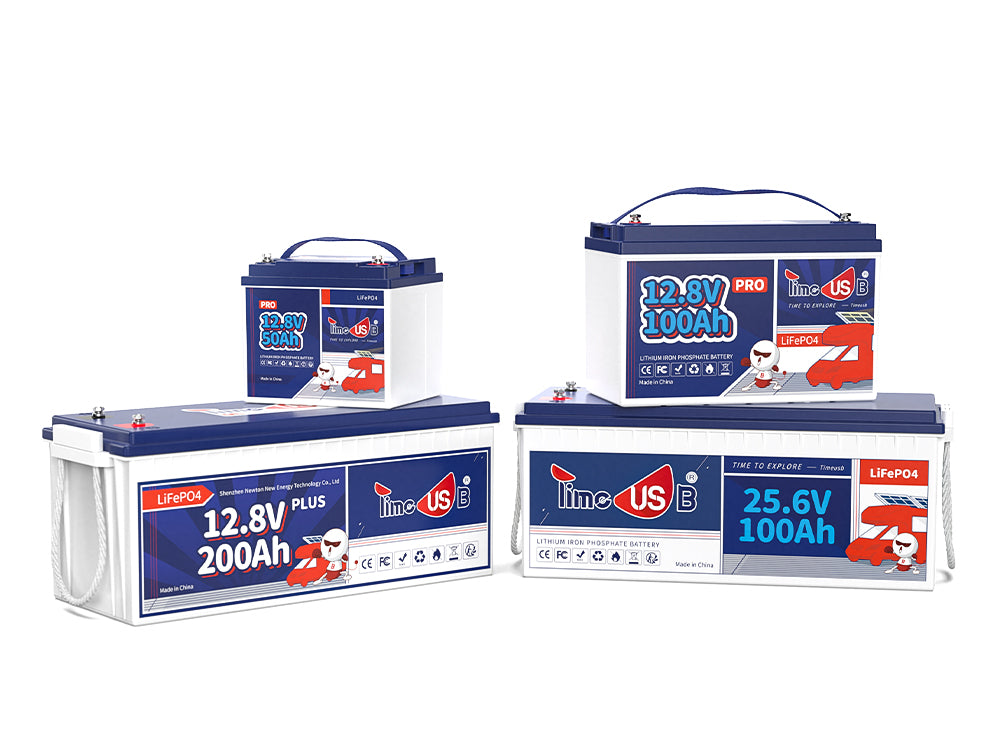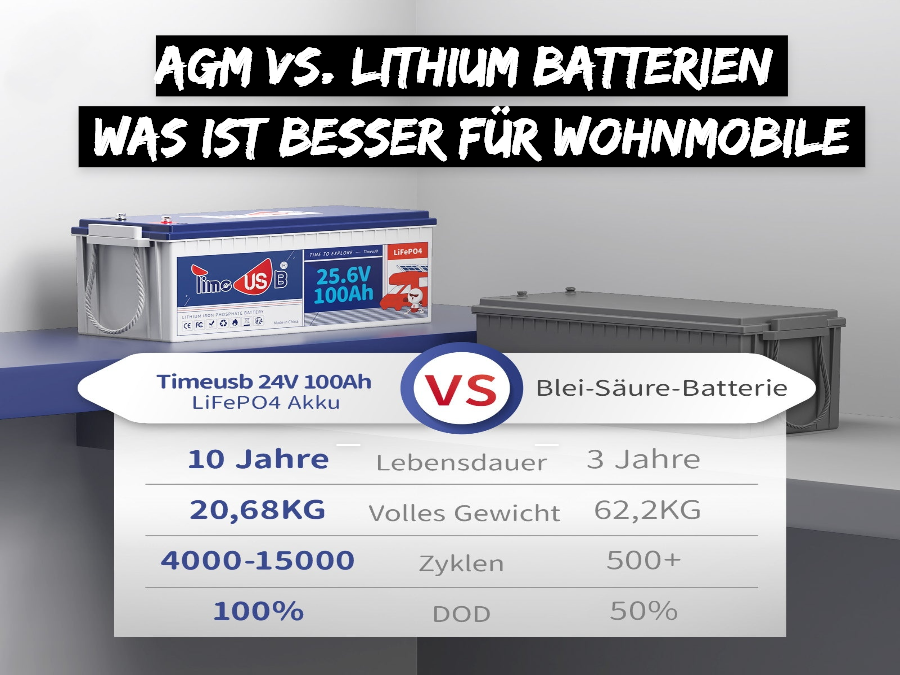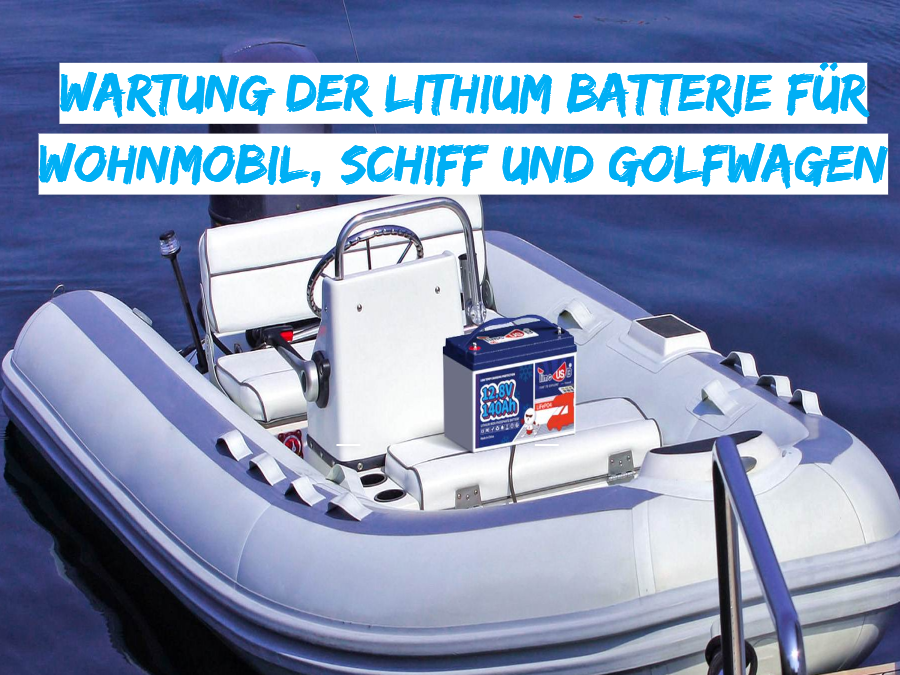Choosing the right battery size for your RV/boat

When it comes to electronic devices, battery size plays a crucial role in how long your device can run without charging. Whether you're using a smartphone, laptop, or other portable device, knowing the size of the battery is important to maximize usage and efficiency.
In this article, we delve deeper into the world of battery sizes and advise you on choosing the right battery size for your device.
How Battery Size Affects Battery Capacity and Performance
How the size of a battery affects its capacity and performance is an essential consideration when choosing the right battery for a specific application. Here are the key factors to consider:
capacity
Generally, a larger battery size equals a higher storage capacity. The size of the battery is directly proportional to its ability to store energy. Capacity is typically measured in ampere hours (Ah) or watt hours (Wh), and larger batteries usually have a higher nominal capacity.
Performance
Battery size can affect performance, especially in terms of current output. Larger batteries can deliver higher power, which is critical for high-drain applications such as electric vehicles or high-power electronic devices. In addition, larger batteries may offer longer life and a greater number of charge-discharge cycles before their performance degrades.
Physical size and portability
It is important to note that the size of a battery does not only determine its energy density, which measures the amount of energy stored relative to its weight or volume. Some battery technologies, such as lithium-ion batteries, can provide high energy density and significant capacity in a compact size. This is particularly advantageous for portable devices such as mobile phones and laptops, where a balance between storage capacity and physical size is sought.
When selecting a battery for a specific application, it is critical to consider the power requirements and find the right balance between physical size, capacity and desired performance.
Different sizes depending on the application
Different battery sizes are used depending on their intended use. The physical size of a battery is not usually specified in terms of length or volume, but is determined by its energy storage capacity, which is measured in units such as kilowatt hours (kWh) or megawatt hours (MWh). However, the dimensions and weight of batteries can vary depending on the manufacturer, model and technology.
battery for off-grid solar system
In solar photovoltaic systems, the size of batteries can vary depending on energy storage needs and solar generation capacity. For small applications such as portable solar systems, solar street lights, or charging systems for small devices, recommended batteries typically have capacities ranging from a few watt-hours (Wh) to about 100 Wh.
Residential systems use batteries to store excess solar energy generated during the day and use it during times of low solar production or at night.The size of these batteries can vary considerably, but is generally in the kilowatt-hour (kWh) range, ranging from a few kWh to around 20 kWh or more, depending on the energy load and autonomy requirements of the household.
Batteries for larger applications such as schools, commercial buildings or solar parks are even larger because they require more power.
battery size for electric vehicles
Battery size in electric vehicles is typically larger than the fuel tanks in traditional diesel or gasoline vehicles. In compact and subcompact cars, battery capacities range from 20 kWh to 40 kWh. In midsize cars and SUVs, they range from 40 kWh to 100 kWh. Luxury and premium vehicles tend to have even larger battery capacities, exceeding 100 kWh and sometimes reaching up to 200 kWh, resulting in a corresponding increase in size.
standardization of battery sizes
Battery sizes have evolved over time and are standardized to facilitate compatibility and convenience. The International Electrotechnical Commission (IEC) has established several standards for battery sizes to ensure uniformity in the market. Here are some commonly used standardized battery sizes:
1.AA (LR6): The AA size battery is cylindrical and has a diameter of about 14.5mm and a length of 50.5mm. It is widely used in various applications such as remote controls, flashlights, toys and many portable electronic devices.
2. AAA (LR03): The AAA size battery is smaller than the AA battery, measuring about 10.5mm in diameter and 44.5mm in length. It is commonly used in devices that require smaller batteries, such as computer mice, remote controls, and some small electronic devices.
3. C (LR14): The C size battery is larger than the AA battery and measures about 26.2mm in diameter and 50mm in length. It is widely used in portable radios, flashlights and various household appliances.
4. D (LR20): The D battery is larger than the C battery and measures about 34.2 mm in diameter and 61.5 mm in length. It is used in high-power devices such as large flashlights, boom boxes and some industrial equipment.
5. 9V (6LR61): The 9V battery, also known as PP3 in Europe, is a rectangular battery with a thickness of about 9 mm, a width of 48.5 mm and a length of 26.5 mm. It is mainly used in devices such as smoke detectors, guitar effect pedals and various audio equipment.
By introducing standardized battery sizes, manufacturers can develop devices that take these sizes into account, making it easier for consumers to find compatible batteries. In addition, standardization promotes interoperability and allows consumers to use batteries interchangeably in different devices.
shapes of battery cells
There are different shapes of battery cells available on the market. Here are some common shapes:
Cylindrical
This is the most common shape for batteries. Examples include AA, AAA, C and D batteries. These cylindrical cells have positive and negative electrodes stacked in a metal casing.

button or coin
These batteries are round and flat and resemble a button or coin.They are typically used in small devices such as watches, calculators and hearing aids. Examples include CR2032 and LR44 batteries.

Prismatic
Prismatic batteries have rectangular or square shapes. They are often used in portable electronic devices such as smartphones, tablets and laptops. Prismatic cells are flat and thin, making them suitable for slim designs.

Pouch
Pouch cells are flexible and thin and are commonly used in devices such as smartphones, tablets and portable power banks. They are lightweight and offer higher energy density compared to other battery types.
What is the battery group size?
In North America, the Battery Council International (BCI) Standard group sizes for rechargeable batteries used in vehicles such as cars, boats, and RVs. These group sizes determine the physical dimensions of the battery, not its capacity. In general, larger batteries tend to have higher capacity, but this is not always the case.
The following table lists some commonly used battery sizes:

Timeusb Battery Sizes Explained
12V and 24V batteries
The most commonly used voltage for deep cycle batteries is 12 volts, which is also the primary voltage offered by Timeusb. In addition to the 12 volt options, Timeusb also offers a 24 volts, 50Ah alternative.
100 Ah LiFePO4 lithium batteries
The 100Ah deep-cycle drop-in replacement battery from Timeusb is in high demand among customers. This battery was specifically developed to seamlessly replace Group 27 and 31 lead-acid batteries.

Below you will find the table with Timeusb LiFePO4 battery size relative to lead acid group size.
| capacity | BMS | L*W*H in mm | Group Size |
| 50A | 198*166*170 | Group 26 battery | |
| 100A | 330*172*214 | Group 31 battery | |
| 250A | 520*269*220 | Group 8D battery |
I hope this article can help you find the best size for you.




